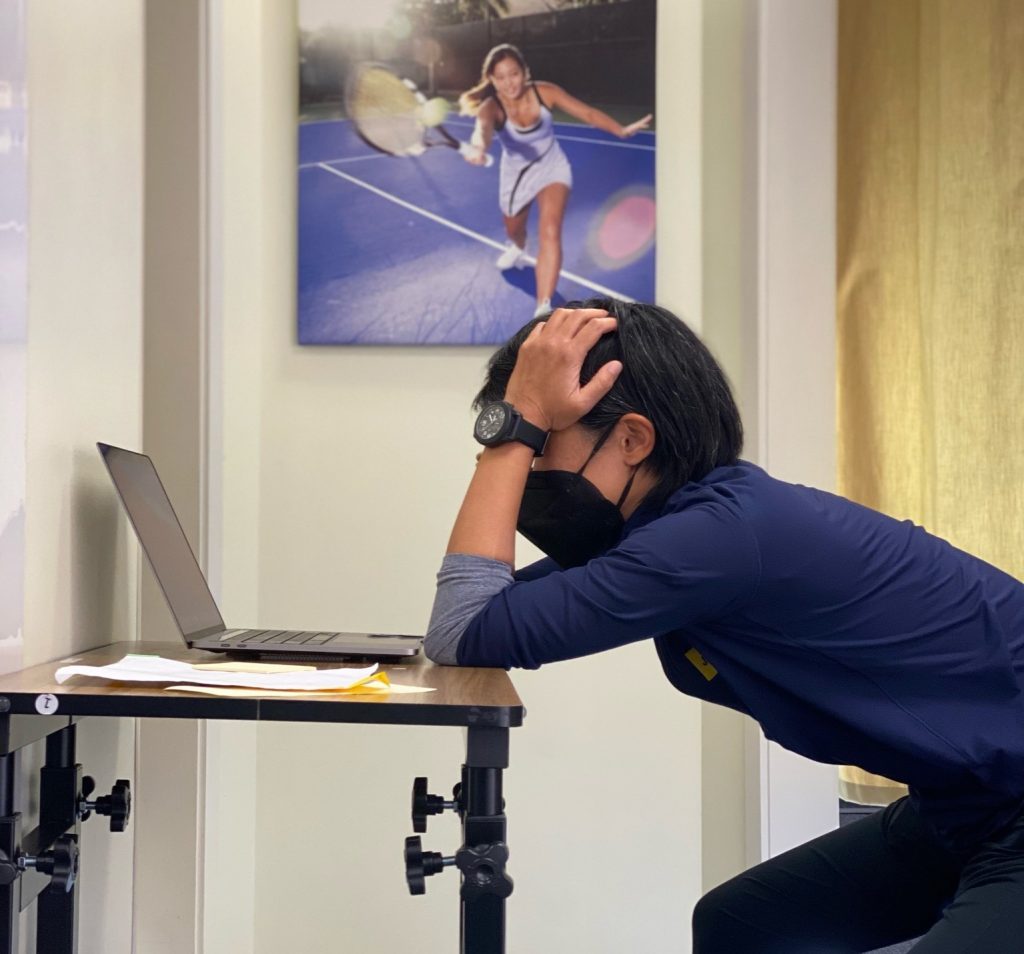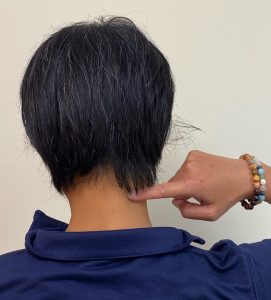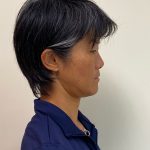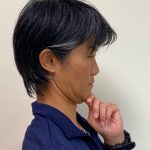
Are you noticing headaches on one side or the back of your head? Are you feeling worse at the end of your workday or headaches that worsen with computer usage or driving? You may be suffering from cervicogenic headaches. Thankfully, they are treatable with physical therapy!
Read below to learn more about cervicogenic headaches, associated symptoms, and types of treatment. Physical therapy might be right for you!
About Headaches
Persistent headaches can be frustrating and downright disabling. Unfortunately, it is an extremely common issue all across the world. The World Health Organization estimates half of the world’s population has had at least one headache in the past year, with about a third having migraines. (1)
Chronic headaches affect about 2-4% of the world’s population. That’s 2-4% too many!
There are too many types of headaches to mention here. Each has their own presentation and occurs for different reasons. Some are rare, some are increasingly common. Here are a few types of headaches that are diagnosed often:
- Tension Headaches: Occur on both sides of your head. The tightness will often feel like someone is tightening a belt around your head. It is typically associated with anxiety or fatigue.
- Cluster Headaches: Predominantly occur in men and will be felt in only one half of the head. Men usually feel them at night about 1-2 hours after going to sleep.
- Withdrawal Headaches: Occur when someone has removed an addictive substance from their life (cigarettes, coffee).
- Head-Trauma Headaches: Occur after a concussion or other head trauma.
Physical therapy can treat most types of headaches… but do you know which type of headache is responsible for about 20% of all headaches?
Cervicogenic Headaches
That’s right! They are not as well-known as the others, but they ‘re certainly common.
“Cervico-” means “neck” and “-genic” means “related to.” Therefore, these headaches are derived from issues at the neck such as tightness and/or stiffness at certain levels.
These problems are usually a result from prolonged static positioning – especially on computers, tablets, and cell phones.
Common Signs and Symptoms of Cervicogenic Headaches
How do you know if you have a cervicogenic headache? First, an evaluation from a licensed physical therapist would be a great first step to figure out what type of headache you have, what is causing it, and how to improve it! Book an appointment with JACO Rehab today.
A very common symptom of this type of headache includes symptom reproduction with movement of your neck in a certain direction. The headache will only be on one side of your head, often around the back or to the side. You may also experience stiffness with these certain movements.
You should not experience nausea or vomiting with this condition. If you do, tell your physical therapist immediately.
If you are experiencing dizziness or spinning along with headaches, then you might have another condition that physical therapists treat called Benign Paroxysmal Positional Vertigo (BPPV). Be sure to notify your therapist if you have this symptom.
Symptoms That Warrant Immediate Attention
Although dizziness occurs with benign conditions like cervicogenic headaches or BPPV, there are a number of other conditions that present with this symptom that warrant immediate medical attention. Seek immediate care if you experience dizziness, especially if it’s associated with one of these other symptoms:
- Double vision
- Drop attacks or fainting
- Difficulty with swallowing
- Difficulty with speech
- Difficulty walking straight
- Unexplained nausea
- Unexplained numbness in your extremities
- Coughing or exercise immediately causes a headache
- Headaches that begin after child delivery
These may be red flags that signal further testing or an immediate visit to the emergency room to rule out the possibility for life threatening issues, like a stroke.
Cervicogenic Headache Exercises
After a thorough evaluation, your physical therapist will determine if you’re appropriate for therapy. You’ll learn ways to manage symptoms and reduce the chance of symptoms returning!
Every patient is unique and requires a tailored approach to treatment. Common interventions may involve manual therapy, including soft tissue manipulation to tight muscles and joint mobilizations to stiff joints. Your therapist will also educate you on which exercises will help you, and which activities to avoid or modify while you heal.
But what can you do about it?
Your physical therapist will provide you with personalized exercises depending on your specific limitations and capabilities. It’s up to you to perform them at home so that you can take control of your symptoms.
Your therapist will also show you specifically-tailored exercises to address your symptoms related to the condition. This often involves strengthening your deep neck flexors and muscles around the shoulder blades to help reduce neck tension. Stretching of the upper trapezius, levator scapulae, scalenes, and pectoral muscles can also be very helpful in providing relief.
One exercise that is helpful for most people are chin tucks!
This exercise is a great tool to help ease neck pain and headaches because it encourages a more neutral neck position, which reduces tension and stiffness. This exercise is a great place to start, but it’s not the sole contributor to success. You’ll want to follow up with a physical therapist to get a comprehensive treatment plan with other exercises to address your headaches.
- Chin Tuck – Start Position
- Chin Tuck – End Position
Cervicogenic Headache vs. Migraine Symptoms
Cervicogenic headaches and migraines are often interchanged, but they are very different in both presentation and treatment.
Migraines…
- Typically last 4-23 hours
- Tend to start around the age of 18
- Can be on both sides of the head
- Have nausea accompanying them
- Usually come with throbbing pain
- Often come with sensitivity to light or sound
- Are not influenced by your neck or head position
Cervicogenic headaches…
- Last about for minutes to hours.
- Tend to be more prevalent in those 33+ in age
- Are primarily on one side of the head
- Rarely present with nausea as a symptom
- Usually come with dull pain
- Do not have auras or sensitivity to light and sound
- Are always influenced by head position
A migraine could also benefit from a physical therapist referral, although treatment looks different and may benefit from a referral to other specialists, depending on its contributing factors. When doctors and physical therapists treat migraines, it’s important to consider outside stressors, diet, and other triggers that could make symptoms worse.
Top 2 FAQs Regarding Cervicogenic Headaches in the Clinic
Can cervicogenic headaches cause dizziness?
They certainly can, and this is treatable with physical therapy!
It is important to rule out more serious issues first during your initial evaluation. If all is clear, your physical therapist will use manual therapy to ease symptoms and teach you exercises to improve the dizziness.
If dizziness continues, you may benefit from additional exercises including habituation exercises to improve gaze stability or balance exercises to improve static and dynamic postural control.
Can cervicogenic headaches cause blurred vision?
No, it does not cause blurred vision. If you have blurred vision, you could be suffering from oscillopsia or have an issue with your central nervous system which requires immediate medical attention.
There are many serious issues that can come with double/blurred vision such as vertebral artery dissection, upper cervical instability, or temporal arteritis. These conditions need to be ruled out, especially when accompanied by any other of the symptoms warranting immediate medical attention (scroll up to read about these).
Again, cervicogenic headaches DO NOT cause blurred vision. If you have these symptoms you have another condition that warrants immediate medical attention.
Have more questions?
Call JACO Rehab and learn how to book an appointment with a physical therapist today!
Written by Nelson Almeida, DPT
Sources
1. Headache Disorders. World Health Organization. April 2016. https://www.who.int/news-room/fact-sheets/detail/headache-disorders


